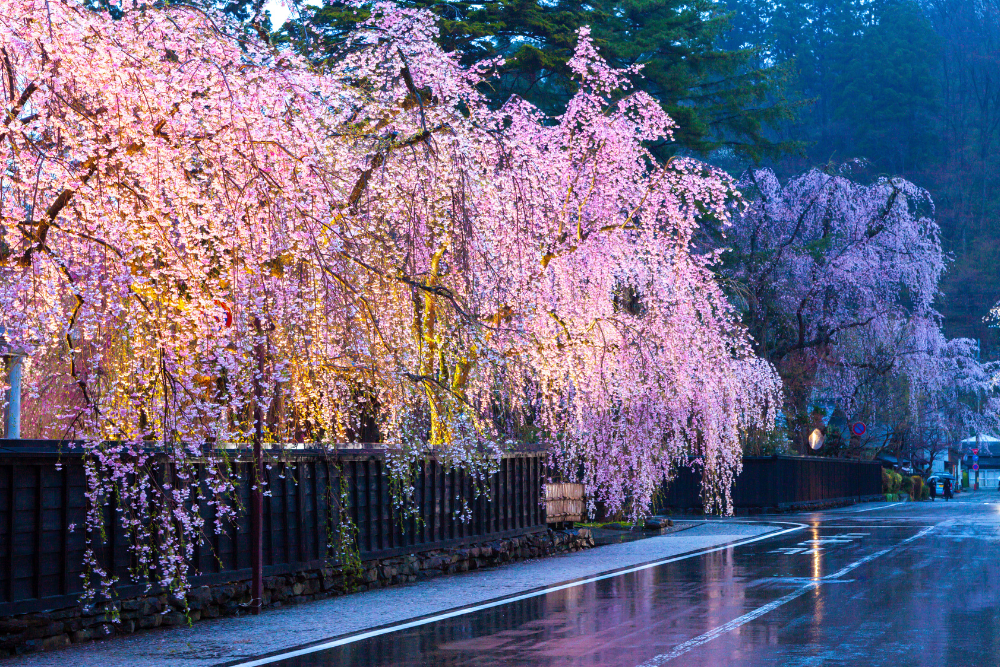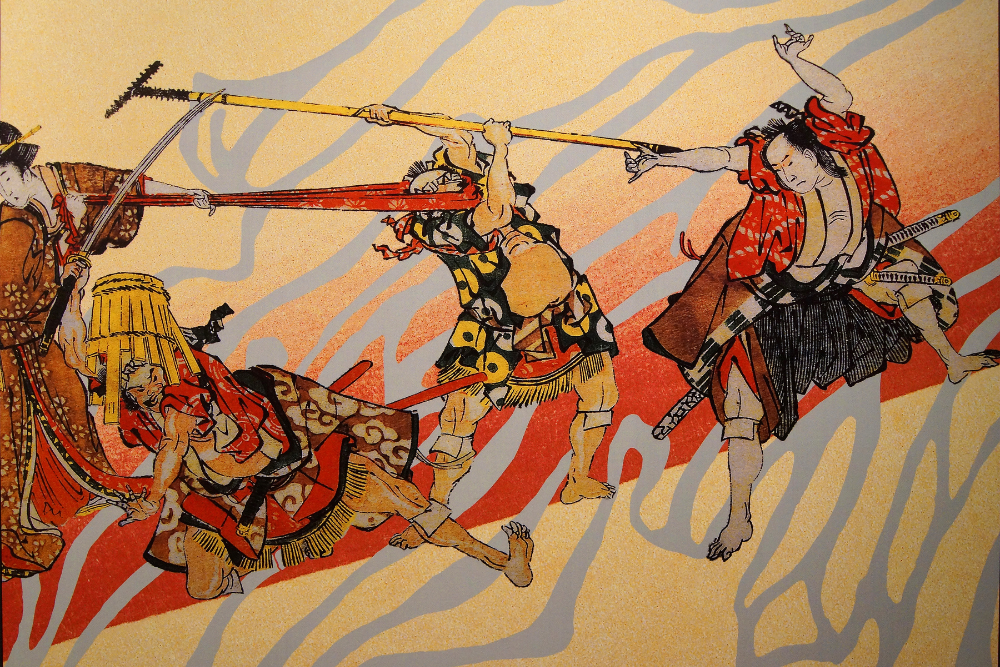The samurai, Japan’s legendary warrior class, played a vital role in shaping the country’s history, culture, and traditions. Though the era of the samurai officially ended in the late 19th century, their legacy remains deeply ingrained in Japanese society. From ancient castles and historic battlefields to well-preserved samurai districts and museums, there are countless places where visitors can immerse themselves in the world of these noble warriors.
Here are the best places in Japan to explore the samurai legacy and experience the echoes of the past.
1. Himeji Castle (Hyogo) – The Ultimate Samurai Fortress
Himeji Castle, also known as the White Heron Castle, is Japan’s most spectacular and best-preserved samurai fortress. Built in the 14th century and later expanded during the Edo period, this UNESCO World Heritage Site showcases the strategic genius of samurai architecture.
Why Visit?
- Impeccable Samurai Defense Features – The castle’s complex maze-like pathways, fortified walls, and hidden escape routes highlight samurai-era military strategy.
- Well-Preserved Samurai History – Walk through the main keep, where samurai lords once commanded their forces.
- Breathtaking Views – The top of the castle offers panoramic views of Himeji city and its surroundings.
Best Time to Visit: Spring (for cherry blossoms) or autumn (for stunning foliage).
2. Edo-Tokyo Museum (Tokyo) – Life in the Samurai Capital
Tokyo, formerly known as Edo, was the heart of samurai rule during the Tokugawa shogunate (1603–1868). The Edo-Tokyo Museum provides a fascinating glimpse into samurai life in this historic capital.
Why Visit?
- Recreated Edo-Era Samurai Residences – Step inside life-size replicas of samurai homes and districts.
- Samurai Armor and Weapons Exhibits – See authentic swords, armor, and battle strategies used by samurai.
- Detailed History of the Edo Period – Learn about the social structure and daily life of samurai in Edo.
This is one of the best places to understand the rise and fall of the samurai class.
3. Tsuruga Castle (Fukushima) – The Last Samurai Stronghold
Tsuruga Castle, located in Aizuwakamatsu, was the site of one of the last samurai battles during the Boshin War (1868–1869). This war marked the end of samurai rule and the beginning of modern Japan.
Why Visit?
- Samurai Battle History – Learn about the fierce defense of the Aizu samurai against imperial forces.
- Beautiful Castle Grounds – Explore the restored keep, samurai gardens, and tea houses once used by warriors.
- Byakkotai Samurai Memorial – Pay tribute to the Byakkotai, a group of young samurai who tragically died defending their honor.
Aizuwakamatsu is known as Samurai City, making it a must-visit for samurai history enthusiasts.
4. Samurai Residences in Kakunodate (Akita) – The Best-Preserved Samurai Town
Kakunodate is one of the best places to experience samurai culture as it was during the Edo period. This well-preserved samurai district features authentic wooden mansions, historic artifacts, and samurai gardens.
Why Visit?
- Authentic Samurai Houses – Visit the Ishiguro and Aoyagi residences to see how samurai families lived.
- Cherry Blossom Beauty – The streets of Kakunodate are lined with cherry trees, making it an ideal spring destination.
- Samurai Weaponry and Artifacts – Explore a vast collection of swords, armor, and historical documents.
Kakunodate remains one of Japan’s most atmospheric samurai towns, offering an immersive step back in time.
5. Nikko Toshogu Shrine (Tochigi) – The Final Resting Place of Tokugawa Ieyasu
Tokugawa Ieyasu, the founder of the Tokugawa shogunate, is one of Japan’s most famous samurai leaders. His lavish mausoleum, Nikko Toshogu Shrine, is a masterpiece of Edo-period architecture and a sacred site for samurai heritage.
Why Visit?
- Impressive Samurai-Era Design – Gold-leaf decorations, intricate carvings, and towering gates showcase the power of the Tokugawa shogunate.
- Historical Significance – This shrine symbolizes the beginning of the Edo period, a time of samurai dominance.
- Peaceful Forest Setting – Surrounded by lush cedar trees, it offers a serene and mystical atmosphere.
This is a must-visit site for those interested in samurai leadership, politics, and spiritual beliefs.
6. Matsumoto Castle (Nagano) – The Black Crow Castle
Matsumoto Castle, one of Japan’s oldest and most well-preserved castles, is a striking black-walled fortress that once housed powerful samurai warlords.
Why Visit?
- Authentic Samurai Architecture – The original wooden interior, secret passageways, and stone defenses remain intact.
- Samurai Weapons Museum – See an impressive collection of swords, matchlock guns, and samurai battle gear.
- Winter Beauty – During the colder months, the snow-covered castle creates a stunning samurai-era atmosphere.
Unlike some reconstructed castles, Matsumoto Castle retains its original samurai-era structure, making it a historically significant landmark.
7. Nagoya Castle (Aichi) – The Birthplace of Samurai Legends
Nagoya Castle was the stronghold of Tokugawa Ieyasu’s clan, a key power during the Edo period. Today, it offers an in-depth look at samurai warfare, strategy, and castle life.
Why Visit?
- Golden Shachihoko Ornaments – The iconic golden dolphins on the roof symbolize samurai power and prestige.
- Samurai Costume Experience – Visitors can dress in samurai armor and take photos inside the castle grounds.
- Reconstructed Honmaru Palace – Explore the beautifully restored palace, once used by samurai lords.
Nagoya Castle is a key destination for those interested in samurai clan politics and military strategy.
8. Samurai and Ninja Museum (Kyoto) – Hands-On Samurai Experience
Kyoto, the former imperial capital, is home to the Samurai and Ninja Museum, where visitors can engage in interactive samurai experiences.
Why Visit?
- Try on Real Samurai Armor – Experience what it felt like to wear authentic samurai battle gear.
- Sword Fighting Demonstrations – Learn about traditional samurai combat techniques.
- Ninja Training Courses – Try your hand at ninja star throwing and stealth techniques.
This museum is ideal for families and history buffs looking for an interactive way to experience the samurai world.
Conclusion
The samurai legacy is deeply woven into Japan’s history, from grand castles and battlefields to preserved samurai districts and hands-on museums. Whether you’re drawn to the elegance of Himeji Castle, the tragic heroism of Aizuwakamatsu, or the warrior traditions of Kyoto, these destinations offer a rich and immersive look into the world of Japan’s legendary warriors.
For anyone fascinated by samurai history, these sites provide an unforgettable journey through the past, keeping the spirit of the samurai alive for future generations.












